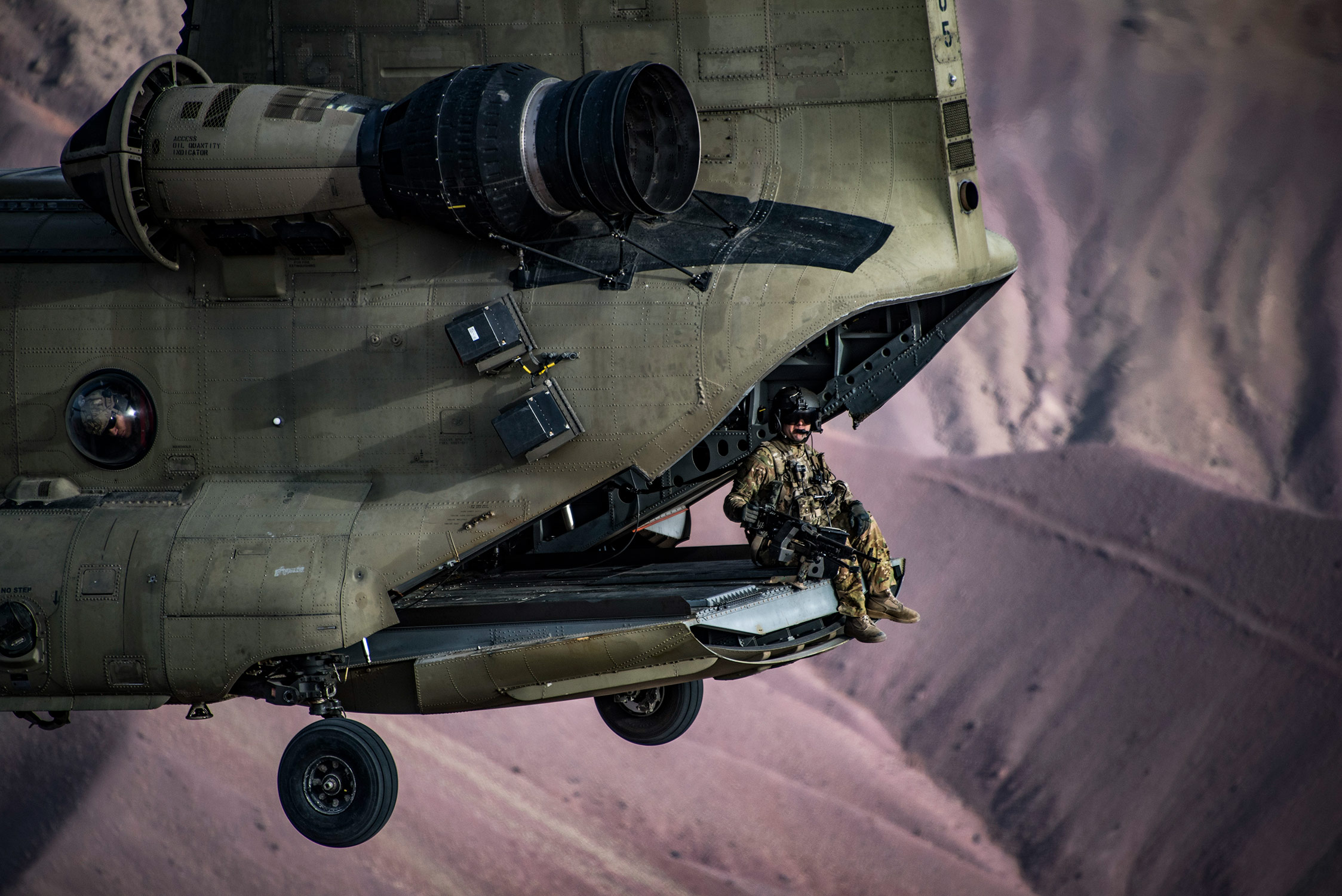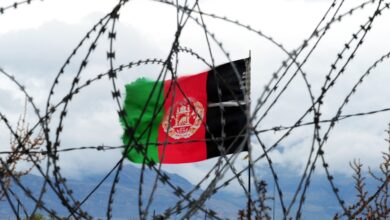US withdrawal of troops from Afghanistan – good news for peace?
U.S. President Donald Trump’s plan to halve the number of American troops in Afghanistan is likely to have negative implications for peace and security for both countries.
The 2001 U.S. invasion of Afghanistan came weeks after members of al-Qaeda killed nearly 3,000 people and injured thousands more on American soil on September 11. The attacks were planned and coordinated by Osama bin Laden and his followers, hiding out along the mountainous Afghan-Pakistan border. Seventeen years later, the United States still retains about 14,000 troops in the country.
Ambassador James Dobbins, former U.S. Special Representative for Afghanistan and Pakistan (2013-2014) and current Senior Fellow and distinguished chair in Diplomacy and Security at RAND told The Defense Post that three factors explain why the Afghan government remains reliant on the United States for security.
The first is that “Afghanistan is a poor landlocked country surrounded by other countries who manipulate it for their advantage,” with Pakistan being the main culprit. Dobbins believes that “Pakistan cannot be trusted to do what we [the U.S.] want,” namely, to expel the Taliban from Afghanistan.
The Pakistani Intelligence Service has long been accused of sympathizing with members of the Afghan Taliban and providing financial support for their operations.
The second is “ethnic diversity.” Afghanistan’s 2004 constitution recognizes 14 different ethnic groups, the largest being the Pashtun. Despite this unique ethno-religious configuration, there have not been any instances of ethnic cleansing during the Afghan war.
Dobbins said he is optimistic for a peaceful future where the country is less likely to fragment along kinship or ethno-religious lines.
The third factor is “tension between modernization and tradition.” Afghanistan’s largely tribal and rural population is dominated by local customs and governance, such as the Pashtuns’ ‘Pashtunwali,’ or ethics guide.
Taliban control in Afghanistan
The Taliban remain a potent threat in Afghanistan today. The movement is mostly comprised of tribesmen from the majority Pashtun group. Their aim is to overthrow the current Afghan government and replace it with a more fundamentalist regime.
In December, Trump decided to withdraw half – around 6,000 – of U.S. troops currently deployed in Afghanistan.
The report has caused deep concern amongst America’s military partners, who will most likely have to withdraw their troops too due to subsequent security and intelligence related shortcomings.
During Trump’s address to the nation in August 2017, the president stated that “a shift from a time-based approach to one based on conditions … on the ground – not arbitrary timetables” is a more effective military strategy than the one America has pursued.
The U.S. government has so far spent $900 billion in Afghanistan, and 2,400 American troops have been killed in the conflict. Therefore 17 years after the U.S. invasion of Afghanistan, it is natural to question when American troops will be withdrawn and greater responsibility handed to Kabul.
“The U.S. should remain a strong supporter of the consolidated government – providing significant levels of support for the government to succeed,” according to Dobbins.
Ensuring that the democratic process is respected and continuing to provide security assistance from afar are the two most important strategies to support the Kabul government.
NATO disbanded the International Security Assistance Force in 2014, with Operation Resolute Support succeeding it – a train, advise and assist mission led by the United States.
But prior to his resignation in December, Secretary of Defense James Mattis shifted the U.S. national defense strategy from being orientated by counter-terrorism towards preparing for great power competition.
A nationwide poll in 2015 found that 92 percent of Afghans supported the Kabul government and only 4 percent favored the Taliban, according to Center for Strategic and International Studies. The Taliban have been thus been largely unsuccessful at winning the hearts and minds of the majority of Afghans.
Although the vast majority of Afghans support the Kabul government and Afghan National Defense and Security Forces rather than the Taliban, local troops, advised by members of Operation Resolute Support, have not been successful at perturbing the Taliban’s attacks.
The Special Inspector General for Afghanistan Reconstruction, the U.S. government’s authority on the reconstruction of Afghanistan, says in its October 2018 report that “unclassified data show[s] the ANDSF made minimal or no progress in pressuring the Taliban over the quarter.”
Data provided by Resolute Support showed that the ANDSF failed to gain greater control or influence over districts, population, and territory in the quarter. The districts, territory, and population under insurgent control or influence also decreased slightly, and those that are “contested” – meaning under neither Afghan government nor insurgent control or influence – increased.
Notably, Afghan government control or influence of its districts reached the lowest level (55.5 percent) since SIGAR began tracking district control in November 2015. The Afghan government controls or influences districts in which about 65 percent of the population lives, unchanged since October 2017, SIGAR said.
Operation Resolute Support, which assists and trains the Afghan security forces, has therefore not been successful at mitigating the Taliban threat. Hence peace talks between the U.S. and the Taliban have been held as the most effective way to bring peace to Afghanistan.
However, the Taliban continues to launch attacks against the central Afghan government, despite the negotiations.
Taliban attacks
Regional and Western governments are concerned that Afghanistan may once again become a safe haven for terrorists and extremists as it was in in the 1990s and early 2000s if the U.S. were to withdraw its troops.
The group has proven capable of attacking high-profile security officials.
In August, the Taliban briefly took Ghazni, a strategically positioned city located in the center of Afghanistan along Highway 1 that connects Kabul to the southern part of the country. The city was recaptured by government forces a few days later but demonstrates that the Taliban do have the capacity to launch deadly offensives against Afghan National Security Forces.
A month later however, rockets fired at Ghazni during a visit by President Ashraf Ghani. The Taliban’s capacity to hold onto these territories may have weakened but their tenacity to continue to launch attacks across the country certainly has not.
In October, the Taliban attacked a high-level meeting at the governor of Kandahar’s office killing provincial police chief General Abdul Raziq and National Security Directorate provincial chief General Mominera, amongst others.
The Taliban claimed responsibility for the shooting, saying an “infiltrator” targeted Raziq and General Scott Miller, commander of Resolute Support and U.S. Forces Afghanistan.
Miller was unhurt but U.S. Army Brigadier General Jeffrey Smiley, in charge of NATO’s military advisory mission in Afghanistan, suffered at least one gunshot wound.
On January 15, the Taliban claimed responsibility for a car bomb which blasted through the Green Village in Kabul, killing four and injuring over 100. A week later, the Taliban may have killed upwards of 100 Afghan security personnel and the militia fighters they were training at a military compound in Wardak province in central Afghanistan.
Most Afghans and regional experts recognize that including the Taliban in a future government is an important prerequisite to achieving a peace agreement. However, by withdrawing foreign troops, the Taliban will lose any incentive to negotiate a peace settlement.
It is therefore likely that insecurity will persist in Afghanistan, RAND’s latest report argues – potentially leading to another American intervention in the future.
“If you’re the Taliban, Christmas has come early” a senior foreign official in Kabul told AFP on the condition of anonymity in December.
Insurgent groups in Afghanistan
In March, Islamic State Khorasan Province produced a video which caused grave concern for Washington and its allies. Hundreds of jihadis in Afghanistan pledged allegiance to ISIS and encouraged others to come fight.
Paweł Wójcik told The Defense Post that Trump’s withdrawal “would be one of the reasons ISKP would rest at ease, because the situation on the ground would immediately force Kabul to send all Special Forces (who are currently in Kunar/Nangarhar) to fight the Taliban on all fronts.”
Moreover, if the Taliban becomes part of a future Afghan government sitting in the National Assembly, questions will arise as to whether these former militants can be relied upon to conduct counter-insurgent campaigns against al-Qaeda and/or ISKP, along with other groups.
Rivalry between insurgent groups could possibly lead to further destabilization in Afghanistan. Wójcik believes that “the Taliban see ISKP as the most important threat to their power” and therefore a power struggle is a likely prospect if the central government cannot control the two groups.












